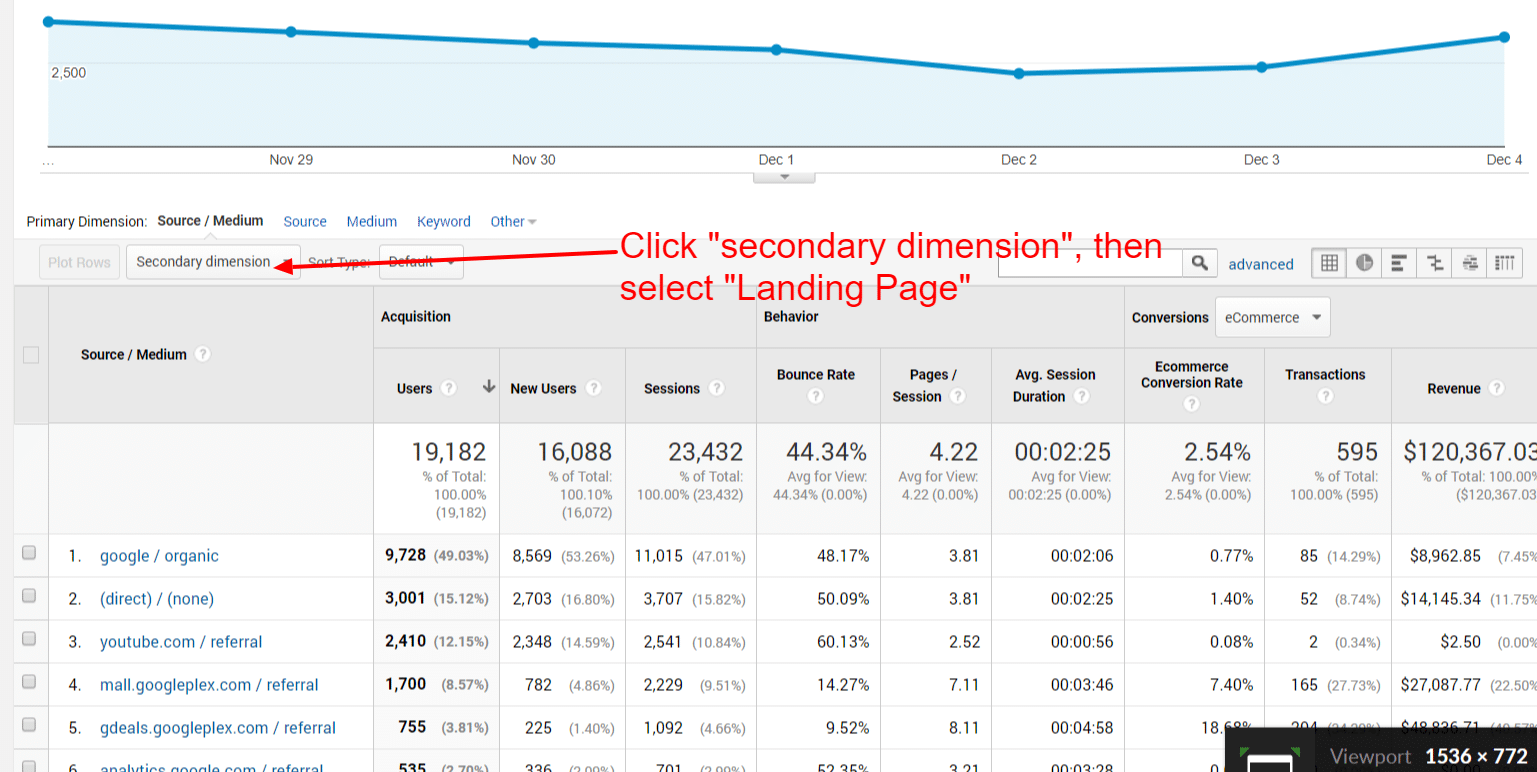Secondary Dimension in Google Analytics: Best Practices and Tips
Secondary Dimension in Google Analytics: Best Practices and Tips
Blog Article
Transform Your Analytics Technique With Secondary Dimension in Google Analytics
By incorporating secondary measurements into information evaluation, a new layer of insights emerges, shedding light on detailed individual behaviors and interactions. The strategic application of additional measurements holds the essential to opening a treasure chest of important details that can revolutionize just how services interpret and act upon their information.
Comprehending Second Dimensions in Google Analytics
Additional measurements in Google Analytics give added context to primary information by enabling customers to assess metrics across a second measurement, providing deeper understandings into user actions and interactions on a site. Secondary Dimension in Google Analytics. While primary measurements offer basic data factors such as pageviews, bounce rate, and session period, secondary dimensions use a more detailed view by segmenting the key data better. This segmentation enables customers to evaluate metrics in combination with an additional measurement, such as traffic resources, demographics, or user habits
Benefits of Utilizing Second Dimensions
Making use of secondary measurements in Google Analytics supplies a strategic advantage by improving the depth of analysis and offering an extra extensive understanding of individual interactions and habits on a website. By integrating second dimensions, analysts can obtain important understandings right into the performance of particular sectors or variables within their information. This enables a much more in-depth examination of individual actions past surface-level metrics, enabling a deeper exploration of the variables influencing individual interaction and conversions.

Just How to Execute Second Measurements
When including second measurements in Google Analytics, one crucial action is to select the relevant metrics and dimensions to enhance the analysis procedure. To apply additional measurements successfully, start by accessing your Google Analytics account and navigating to the record you wish to improve with additional data. As soon as in the record, find the "Secondary Measurement" switch, usually located over the data table. Clicking on this switch will certainly open a drop-down menu listing numerous dimensions that can be contributed to your main measurement for deeper understandings.
After picking the appropriate second dimension, such as 'Source/Medium' or 'Tool Group,' Google Analytics will certainly display the information in a much more detailed style, allowing you to cross-analyze various facets of individual behavior. Remember to experiment with various mixes of additional and primary measurements to discover useful patterns and trends that can educate your advertising techniques. By executing second measurements thoughtfully, you can gain a more thorough understanding of your web site or app efficiency and make data-driven choices to maximize your digital existence.
Analyzing Information With Secondary Measurements
Boost your data analysis in Google Analytics by incorporating secondary dimensions to delve deeper into customer actions patterns and enhance your digital marketing techniques efficiently - Secondary Dimension in Google Analytics. By including additional dimensions to your main data, you can acquire useful insights that can assist you make educated choices regarding your website or application performance
Analyzing information with second measurements permits you to sector your key data even more, supplying an extra detailed sight of individual communications. Incorporating the main measurement of 'source/medium' with a secondary dimension like 'touchdown page' can expose which specific pages are driving web traffic from various sources. This info can be crucial in fine-tuning your web content technique or maximizing your advertising projects to increase conversions.
In addition, check over here utilizing additional dimensions enables you to recognize relationships between different metrics, aiding you understand the effect of numerous elements on individual behavior. Whether it's assessing demographics alongside individual involvement metrics or gadget classifications with conversion prices, secondary measurements empower you to discover hidden fads and patterns that can direct your advertising and marketing efforts.
Optimizing Performance With Additional Dimensions
To enhance the performance of data evaluation and decision-making in Google Analytics, including secondary dimensions is vital to optimizing efficiency metrics and obtaining deeper understandings right into individual actions patterns. By utilizing additional measurements, analysts can delve beyond surface-level information and reveal beneficial correlations that might or else go undetected. This optimization strategy enables companies to tailor their advertising initiatives extra effectively, identify areas for renovation in website use, and boost total customer experience.
Additional dimensions provide a more comprehensive sight of individual interactions by providing added context to key data metrics. Pairing the key measurement of 'landing web page' with an additional measurement like 'gadget classification' can reveal whether certain gadgets are a lot more most likely to drive interaction on specific touchdown pages. This understanding can notify responsive Web Site design renovations or targeted marketing techniques to enhance efficiency.

Conclusion
To conclude, the combination of secondary measurements in Google Analytics supplies services with an effective tool to boost their analytics method. Secondary Dimension in Google Analytics. By delving deeper into individual behavior and communications, marketing professionals can discover valuable insights that can drive efficiency optimization and enhance the total individual experience. Leveraging second dimensions permits for a more thorough analysis of information, leading to more enlightened decision-making and tailored advertising and marketing efforts
Additional measurements in Google Analytics offer added context to primary data by permitting users to examine metrics throughout a second measurement, offering deeper understandings into user habits and communications on a site. While key dimensions offer basic data points such as pageviews, bounce price, and session period, secondary dimensions use an even more detailed view by segmenting the main information her response better.One of the key benefits of utilizing second dimensions is the ability to discover relationships and patterns that might not be promptly noticeable when evaluating information with key measurements alone.When incorporating additional measurements in Google Analytics, one essential step is to choose the appropriate metrics and measurements to improve the analysis process. Matching the key dimension of 'landing web page' with a second dimension like 'gadget classification' can disclose whether certain devices are much more most likely to drive involvement on specific landing pages.
Report this page